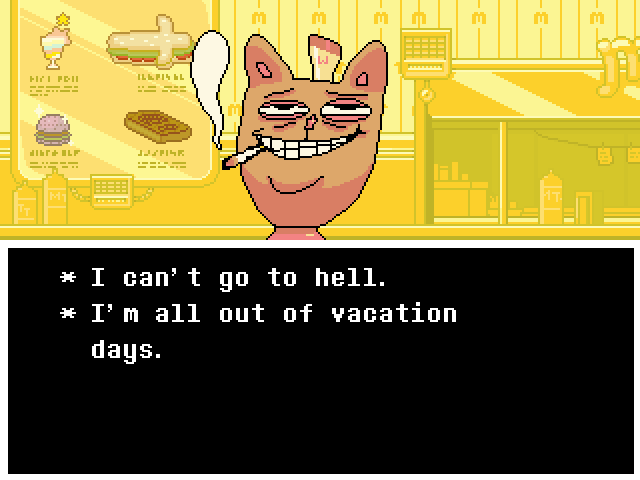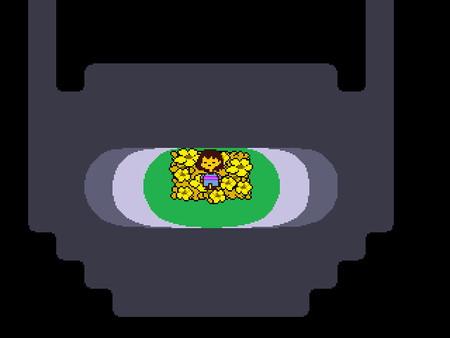ndertale is a story about misfits.
Best Games Played 2016
These games and awards were decided during the Wardcast’s Best Games Played 2016 episode, where we considered any and all games played by the members of the Wardcast in 2016, even if they weren’t released that calendar year.
Playing as a child stumbling upon a world of monsters banished long ago by humans, you find that the seemingly predestined evil creatures are mostly just misunderstood. In an amalgam of Alice in Wonderland and Where the Wild Things Are, with an unabashed amount of nerd culture thrown in for good measure, Undertale creates a madcap world that draws you in with its charm and keeps you there with its heart.
And not only is it charming; it’s also funny. Like real, uncontrollable, laugh-out-loud funny. The game’s writing transitions seamlessly from slapstick to deadpan to self referentialism to surrealism. For instance, you’ll meet Papyrus – one of many fan favorites in the game – early on, where his comedic themes rely on some pretty simplistic premises: “This is Papyrus. His speech text is in the Papyrus font and he just talks about spaghetti and how smart he is.” It’s a blended brand of humor that wouldn’t work if it were less sincere, but Undertale wears its oddball nature with a badge of honor and trusts the audience to join in on the fun.
The humor would also misfire if it relied too heavily on any one facet or joke. Fortunately, Undertale contains a cast of crazy but cherishable characters that catapult you through the story and ensure that the humor and the charm never lose steam. They include, but are not limited to: a narcissistic, murderous robot; two slapstick skeleton siblings; a social media-obsessed dinosaur scientist; and a fast food restaurant worker having an existential crisis.

The game is also an ode to the 8-bit and 16-bit eras of games. Its soundtrack, composed by Undertale’s solo creator Toby Fox, is wonderfully chiptuny. All of the sprite work has an 8-bit level of detail that occasionally intermingles with a 16-bit level of animation fidelity, making it look like it was part of some cross-generational NES/SNES art movement that never existed but should have. Undertale pays tribute to its retro forebears in other ways too, from its Earthbound-esque combat design to cutscenes modelled after SNES-era Final Fantasy titles.
Toby Fox’s creation has a lot to say about game design too. In dialog, characters discuss what other games brush away with a wave of the hand. Monsters have casual conversations about making puzzles and fighting cause that’s what they’ve always done and what else would you do? Having the monsters grapple with their designated nature also forces the player to question the nature of popular, mainstream gaming — this is what I’ve always done, and what else would I do?
In its combat, the game’s big mechanical twist is, hey, you don’t actually have to fight the monsters. Any battle can be won without bloodshed once you figure out the trick to peacefully disarming your opponent. But the game doesn’t tell you that, instead waiting to see what assumptions you make about the combat encounters, making you sit with the fact that most other experiences in the video game canon revolve around the nonoptional murder of other creatures.

Should the existence of this pacifistic option be made more explicit to the player? That’s probably the core question underpinning detractors’ problems with Undertale. If you play the game solely as a turn-based RPG, then the monster encounters go from being fun logic puzzles that spread the message of forgiveness and peace to rote, boring combat sequences.
But this too may be a message Toby Fox is trying to send. What if you weren’t rewarded for defeating your opponent in a show of strength? What if you were actively punished for doing what so many other games reward you for? Most players don’t expect their base assumptions about playing games challenged on such a fundamental, ludological level, which may explain the pushback.
Combine this with the specific, misfit nerd subculture Undertale identifies with — one that cherishes heartfelt characters; one that loves pixel art of yore; one that is particularly otaku — and Undertale becomes a pretty insular work of art.
But that’s the risk all art runs.
Because we’re not a part of the same shared consciousness, all media is not going to resonate with all people. And if Undertale tried to identify with everyone, then it would lose what makes it so special. But it’s worth trying out to see if it’s for you. Because if it is, it’ll be one of the most memorable experiences you’ll ever have.













